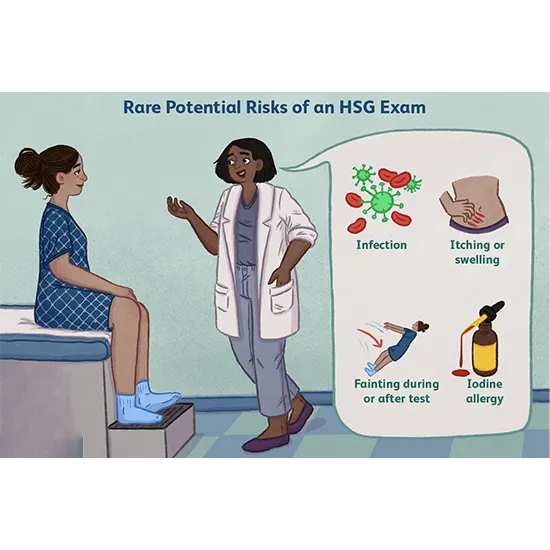
Overall, the HSG test is generally considered safe and well-tolerated, with mild to moderate side effects that usually resolve quickly. Women who have any concerns or questions about the HSG test should discuss them with their...
The Hysterosalpingogram (HSG) Test is generally considered a safe and low-risk procedure, but some women may experience mild to moderate side effects. Here are some of the potential side effects of the HSG tests:
Pain or Discomfort: Many women report mild to moderate pain or discomfort during the HSG test, which feel like menstrual cramps or sharp and intense pain. This is due to insertion of the catheter and injection of contrast dye.
Vaginal Bleeding: Some women may experience light bleeding or spotting after the HSG test, which is usually mild and resolves within a few days.
Infection: There is a small risk of infection with any medical procedure, including the HSG test. Women who experience fever, chills, or severe pelvic pain after the test should contact their healthcare provider immediately, as these may be signs of an infection.
Allergic reaction: Some women may have an allergic reaction to the contrast dye used in the HSG test, which can cause symptoms such as hives, itching, or difficulty breathing. Women who have a history of allergies or who have had a previous reaction to contrast dye should inform their healthcare provider before the test.
Fainting: In rare cases, some women may experience fainting or dizziness during or after the HSG test, usually due to anxiety or stress.
Overall, the HSG test is generally considered safe and well-tolerated, with mild to moderate side effects that usually resolve quickly. Women who have any concerns or questions about the HSG test should discuss them with their healthcare provider before the test.









